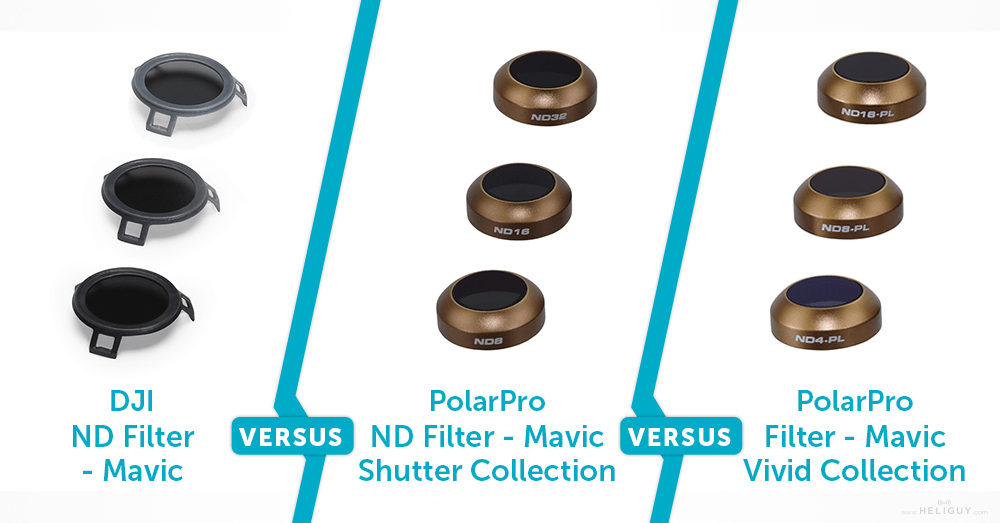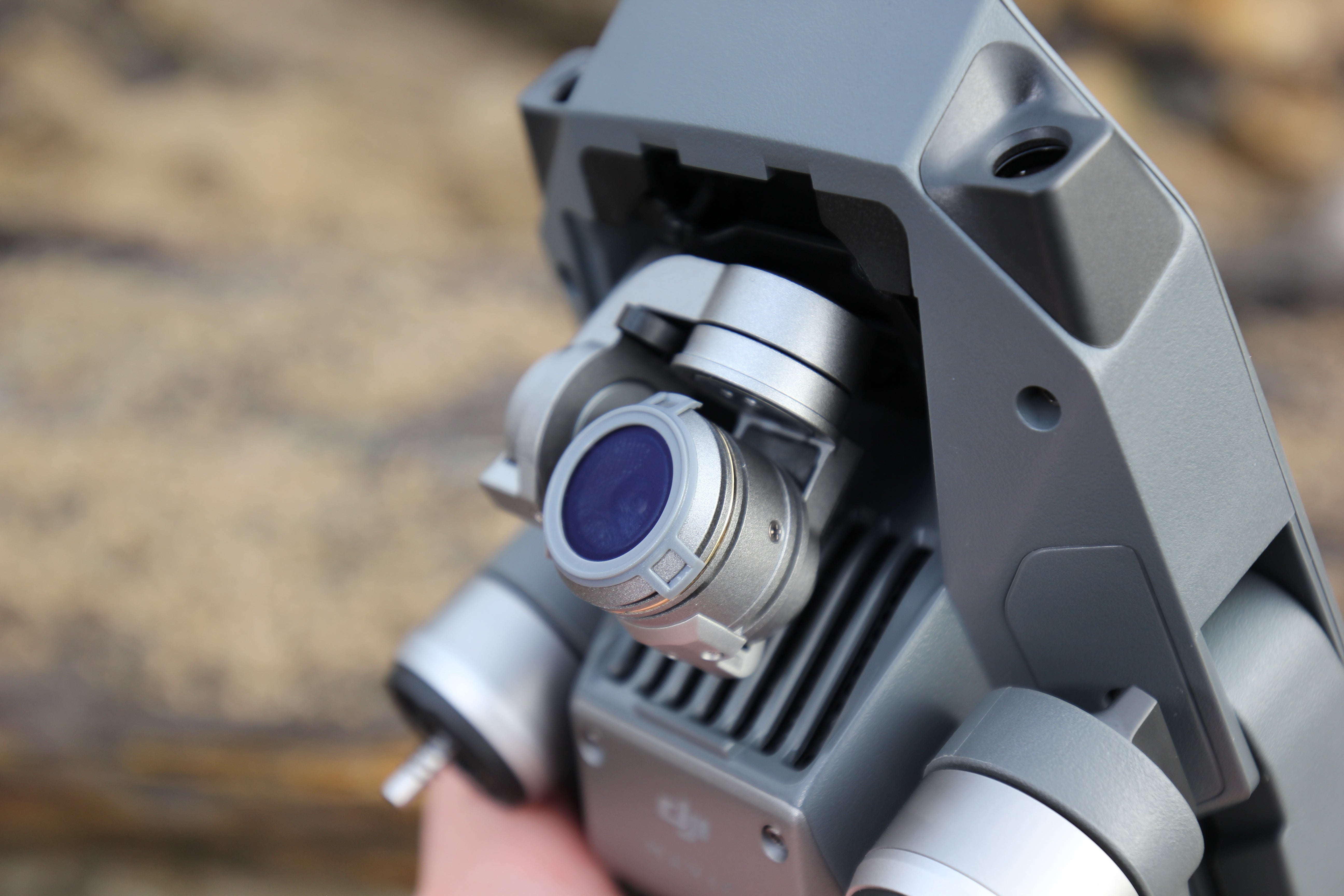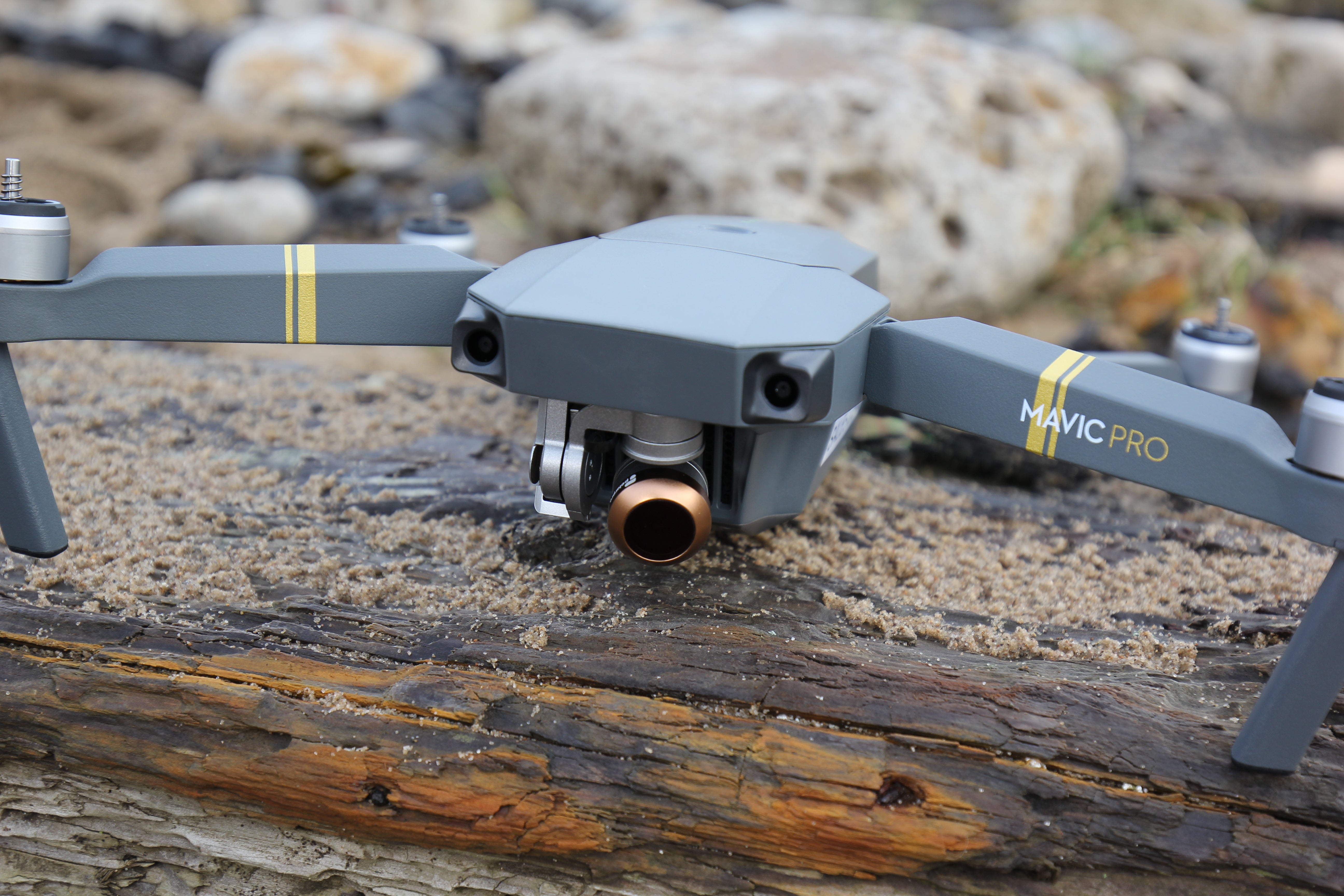 DJI ND Filter Vs PolarPro Filters
Neutral Density or ND filters are used across all aspects of photography but are particularly useful with aerial and drone photography. The purpose of an ND filter is to reduce the light going into the camera’s sensor. This has led to them being dubbed ‘sunglasses for your camera’.
ND filters can be hugely beneficial but choosing and using a filter is not as simple as they initially seem. There are lots of filters available for your drone, all of which can produce different results.
Keep reading to find out which ND filters are available through heliguy™ and the merits of each.
DJI ND Filter Vs PolarPro Filters
Neutral Density or ND filters are used across all aspects of photography but are particularly useful with aerial and drone photography. The purpose of an ND filter is to reduce the light going into the camera’s sensor. This has led to them being dubbed ‘sunglasses for your camera’.
ND filters can be hugely beneficial but choosing and using a filter is not as simple as they initially seem. There are lots of filters available for your drone, all of which can produce different results.
Keep reading to find out which ND filters are available through heliguy™ and the merits of each.
ND Filters and Their Uses
ND filters for drones are small glass or plastic covers that are fitted onto the camera’s lens. They are tinted to varying levels of transparency, dependent on their ND rating. As we mentioned above, the main purpose of an ND filter is to reduce the amount of light that enters the camera sensor, whilst having a minimal effect on the colour and sharpness of the image. The ND filters work with the camera to increase the F-number or F-stops by limiting the amount of light entering the camera's sensor. Changing the amount of light entering the camera helps you control the exposure of your shot. Another application of an ND filters is to give longer exposure images a natural and softer effect when your subject is in motion. Blurring and softening images and videos helps you avoid rigid and unnatural results. Additionally, if you're looking to capture a close-up subject with a shallow depth of field, an ND filter can be used to avoid overexposure of your image. For a more in-depth look at ND filters and their uses, head to our previous Insider post here. DJI Mavic with DJI ND Filter
DJI Mavic with DJI ND Filter
Introduction to ND filters
Heliguy produced a short introduction video about how and when to use ND filters with your drone. https://youtu.be/6BpsbJsTJp8Polarising Filters and Their Uses
As well as being ND filters, the PolarPro Vivid Collection filters are also polarising filters. A polarising filter is a great addition to a photographer and videographer's kit, be it aerial or any other work. The main purpose of a polarising filter is to reduce glare in images, especially from reflected light. Reducing glare results in photos and videos with more vibrancy which are will likely to have a better exposure with limited haze. A polarising filter can be useful in any condition to reduce the glare especially when shooting over water, snow or other reflective surfaces. Keep reading to see the ND and ND/PL in action below.When to Use a Filter?
Choosing an ND filter does not have a guaranteed process and will likely need to be tested when you're in the field, however, please use the below information as a basic guide for choosing your filter. ND4 Filter - F-stop of 2 - Best for low-light conditions such as early stages of sunrise and late stages of sunset. ND8 Filter - F-stop of 3 - Best for cloudy and overcast days with mid-level light. ND16 Filter - F-stop of 4 - Best used in partly cloudy or sunny days. ND32 Filter - F-stop of 5 - Best used for bright and sunny conditions. ND4/PL Filter - F-stop of 2 - Best for low-light conditions where polarising is required e.g. filming around reflective surfaces. ND8/PL Filter - F-stop of 3 - Best used for cloudy and overcast days where polarising is required e.g. filming around reflective surfaces or glare. ND16/PL Filter - F-stop of 4 - Best used in sunny and bright conditions where polarising is required e.g. filming around reflective surfaces or glare. This is strictly a guide based on the ND and ND/PL filters available through Heliguy. Choosing which filter to use is a stylistic choice so choose whichever filter suits you. DJI Mavic with PolarPro ND Filter
DJI Mavic with PolarPro ND Filter
Filter Comparison
We've chosen to compare filters on the DJI Mavic Pro ND filters including the DJI ND Filters, PolarPro DJI Mavic Filters - Cinema Series - Shutter Collection and the PolarPro DJI Mavic Filters - Cinema Series - Vivid Collection. All of these filters are available through the heliguy™ website or by phone. Let's start by taking a look at the comparison chart below for more details on each of the specifications of each lens pack.Specifications
 DJI ND Filter - Mavic
DJI ND Filter - Mavic
|
 PolarPro ND Filter - Mavic - Shutter Collection
PolarPro ND Filter - Mavic - Shutter Collection
|
 PolarPro Filter - Mavic - Vivid Collection
PolarPro Filter - Mavic - Vivid Collection
|
Model Name |
Mavic ND Filters Set (ND4/8/16) | DJI Mavic Filters - Cinema Series - Shutter Collection | DJI Mavic Filters - Cinema Series - Vivid Collection |
Drone Compatibility |
DJI Mavic Pro Platinum and Mavic Pro | DJI Mavic Platinum and Mavic Pro | DJI Mavic Platinum and Mavic Pro |
Filter Type |
Neutral Density Filter | Neutral Density Filter | Neutral Density and Polarising Filter |
Included Filters |
ND4, ND8 and ND16 filters | ND8, ND16 and ND32 filters | ND4/PL, ND8/PL and ND16/PL filters |
Price |
£33.00 (inc. VAT) | £79.00 (inc. VAT) | £89.00 (inc. VAT) |
Image Comparison
Below, we took the same picture to capture the differences between the filters. Due to the light conditions, we chose the ND8 and ND16 ratings across all the lenses. The site was chosen to show the difference while using the filters in the close-up graffiti as well as the horizon. Each image was taken with an ISO and shutter speed of 100. DJI ND Filter Vs PolarPro Filters - ND8
As you can see in the images, using an ND filter improves the exposure of the image, making it look less washed out. The colour in the graffiti is more vivid with the filter and the horizon is sharper.
The polarising aspect of the Vivid Collection filter hugely improves the colour of the graffiti although it makes the ground in forefront of the image significantly darker. This would come down to a stylistic choice between each image and filter.
DJI ND Filter Vs PolarPro Filters - ND8
As you can see in the images, using an ND filter improves the exposure of the image, making it look less washed out. The colour in the graffiti is more vivid with the filter and the horizon is sharper.
The polarising aspect of the Vivid Collection filter hugely improves the colour of the graffiti although it makes the ground in forefront of the image significantly darker. This would come down to a stylistic choice between each image and filter.
 DJI ND Filter Vs PolarPro Filters - ND16
The ND16 rating again improves the exposure and clarity of the image with the graffiti and the background. The polarising filter produces the highest quality image with the brightest colour.
The use of both the ND8 and ND16 filters improves the image quality in these conditions, giving greater creative control. The variance between the DJI and the PolarPro filters can particularly be seen with the addition of the polarising aspect but choosing between the three depends on the desired image.
DJI ND Filter Vs PolarPro Filters - ND16
The ND16 rating again improves the exposure and clarity of the image with the graffiti and the background. The polarising filter produces the highest quality image with the brightest colour.
The use of both the ND8 and ND16 filters improves the image quality in these conditions, giving greater creative control. The variance between the DJI and the PolarPro filters can particularly be seen with the addition of the polarising aspect but choosing between the three depends on the desired image.
Video Comparison
The below is an example of video captured on the DJI Mavic Pro with and without an ND filter to show the effect on motion. For this example, the Mavic was handheld rather than flown to achieve the desired results. via GIPHY
As you can see, when the video is captured without the ND filter, the car has very limited blurring and the effect is somewhat unnatural. When an ND filter is used, the video has a blurred effect that's more accustomed to the human eye.
Using an ND filter in your videos is likely to be more similar to TV and film shoots you're used to.
Like the images, both options are viable dependent on your individual style and desired results.
via GIPHY
As you can see, when the video is captured without the ND filter, the car has very limited blurring and the effect is somewhat unnatural. When an ND filter is used, the video has a blurred effect that's more accustomed to the human eye.
Using an ND filter in your videos is likely to be more similar to TV and film shoots you're used to.
Like the images, both options are viable dependent on your individual style and desired results.
Functionality
Usability with drone filters is a key aspect as you will likely have to make changes in the field. You also don't want to lose a filter mid-flight and be scrambling around your flight location trying to find it.Installation
Installing the PolarPro and DJI filters on all DJI aircraft is relatively simple once you get the hang of it. See the below gifs of the installation of the two filters onto the Mavic: via GIPHY
via GIPHY
 via GIPHY
Please note, you should only install a filter on your aircraft when it's turned off to avoid damaging the gimbal. You should also support the gimbal to avoid putting stress on it.
via GIPHY
Please note, you should only install a filter on your aircraft when it's turned off to avoid damaging the gimbal. You should also support the gimbal to avoid putting stress on it.
Filter Fit
The DJI filters are attached to the lens using three clips whereas the PolarPro filter press onto the lens. The DJI filters are secure, however, the PolarPro have a much tighter fit that is advantageous during high-speed flight. A tighter fit will also reduce the chance of light going through any gaps between the filter and the lens.PolarPro App
To offer additional support when using the PolarPro filters, PolarPro have developed a free of charge app to help you pick which filter to use in your location. This is done by working out the correct shutter speed based on your frame rate. The app will also give live updates on weather, wind speeds, KP index and programmable 'golden hour' notifications. The app isn't limited to aerial use and can be used for other applications. It is available for download on Apple and Android devices.For more information on drone camera settings, please visit our previous heliguy™ Insider post here.
Summary
Both the DJI and PolarPro filters are great filters, capable of improving your aerial videos and images. Based on the price, DJI's filters are a relatively cheap and very effective option. They're simple to use and easy to install and remove. They can help you produce high-quality images and videos. The PolarPro filters are more expensive but have an extremely secure fit that would be ideal for pilots who push their drone to the limits. The polarising aspect of the Vivid Collection can be hugely beneficial, especially if shooting around water, snow or other reflective surfaces. The PolarPro app also makes choosing the filter based on your camera settings significantly more simple. Either way, you're unlikely to be disappointed with any of the filter sets you choose.Availability
All filters are available through heliguy™ through the following links: DJI Mavic ND Filter Pack DJI Mavic Filters - Cinema Series - Vivid Collection DJI Mavic Filters - Cinema Series - Shutter Collection DJI Mavic Filters - Cinema Series 6-Pack heliguy™ ND FiltersTo discuss any information from the above post or any DJI or Freefly product, please give one of our team a call on 0191 296 1024 or email us at info@heliguy.com.
Keep checking back to Heliguy’s Insider Blog for more announcements, insights into drones and, of course, the latest news from the drone industry.



Leave a comment